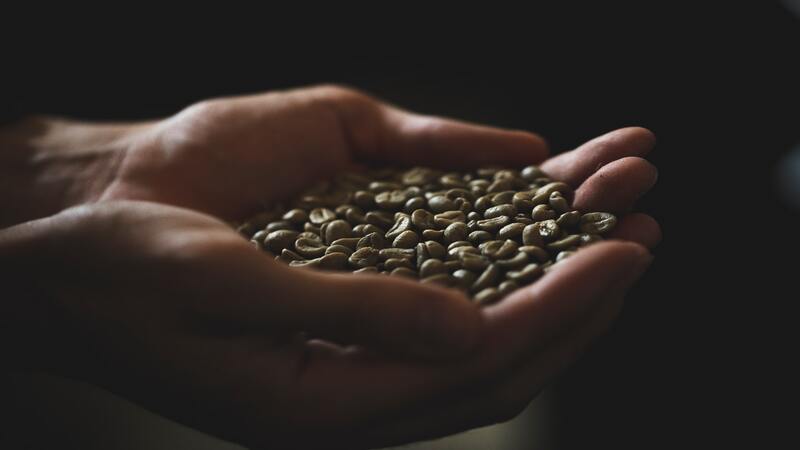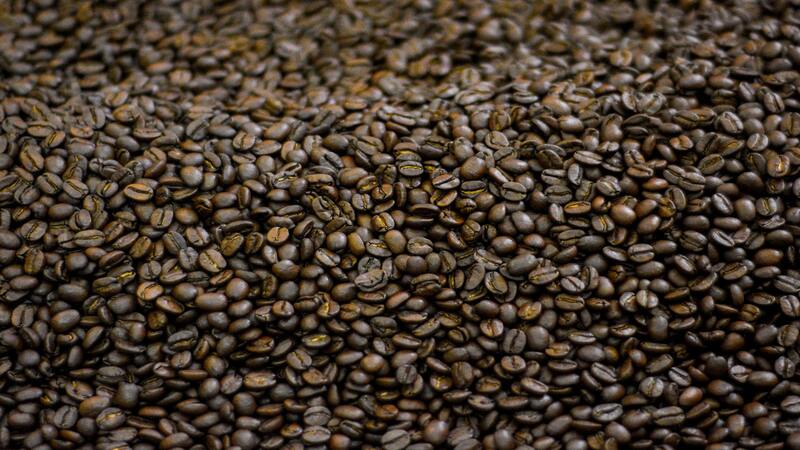Green beans coffee sampling – Before choosing the green bean coffee that you are going to buy, it is customary for green beans buyers to ask for a sample of green beans coffee to examine the quality of a particular coffee batch so that buyers can find out whether these green beans coffee are suitable for their needs or not.
The needs of green coffee buyers are of course different, not only for consumption or personal needs, but also for a larger scale production such as roasters. This addresses the need to adjust the characteristics of green beans coffee so that it is in accordance with what buyers expect.

As a coffee producer, samples of green beans coffee are important because they will have an impact on sales. This green beans coffee sampling will help – or destroy – coffee bean sales. That’s why this sampling process is a bit difficult and tricky.
Sampling of green beans coffee, of course, must be able to cover the overall characteristics and quality of the coffee beans themselves, therefore sampling is important for coffee producers. Sampling must meet buyer expectations as well as an appropriate portfolio.
Now let’s take a look about green beans coffee sampling, we will give you a simple introduction about that. Check this out!
What is it Actually?

Photo by Rene Porter on Unsplash
Maybe some of you, or in general as people that doesn’t come from coffee industry will not be familiar with “green beans coffee sampling” term. Among green beans coffee buyer and coffee bean suppliers, the terms of green beans coffee sampling is very familiar. Usually for the first time, before cooperating to regularly supply coffee beans to buyers, coffee bean samples become the language of communication in buying and selling in the coffee industry.
As the best possible marketing communication is carried out by the coffee bean supplier, of course the green beans coffee samples will and need to be honest about the character of the taste. This is why coffee bean suppliers should pay attention to the initial touches when sending green beans coffee samples, and make sure do not send unsuitable samples.
The most common thing that green beans coffee suppliers or sellers do is introducing their coffee beans to potential buyers by sending green beans coffee samples, some provide special prices and some require prospective buyers to buy them at normal prices, depending on the marketing strategy of each supplier.

How Supplier Sent the Green Beans Coffee Samples?
Commonly the standard of green beans coffee samples sent is around 200-350 grams. However, how many grams of coffee beans sent as sample are also according to the sampling needs of the prospective buyer. Even if it requires to provide normal prices to prospective buyers, it is not a serious problem because prospective buyers also understand what costs the supplier must pay for the green bean samples they want.
After the coffee bean sample reaches the prospective buyer, then the coffee bean sample will be evaluated, whether the taste characteristics of the coffee beans match what the coffee bean supplier says. It’s all about trying to ascertain whether the quality of the coffee beans is what they expected, or how high the defect rate of the green bean samples is.
One of the ways to check the characteristic is cupping session. Through the cupping session, coffee beans will be evaluated by several people, not just one person, this is to ensure that everyone who does the cupping session gets the same taste notes. Each prospective buyer has their own method of evaluating coffee beans.

Photo by Battlecreek Coffee Roaster on Unsplash
Type of Green Beans Coffee Sample
There’s two types of green beans coffee samples that commonly used in almost many coffee producing countries.
Day-Lot Sample
The day-lot sample can be said to be almost similar to a tour to a coffee plantation. Farmers provide direct experience to potential buyers or consumers when the harvest arrives. A description of the location of coffee plants, starting from the height, type of soil, and other factors that affect the quality of their coffee beans.
In fact, it is not uncommon for some to do cupping sessions on the spot. This will then provide information regarding the character of the taste / taste notes of the coffee beans on the farm.

Photo by Katya Austin on Unsplash
Samples by Types
This sample, which is often done by green bean sellers, also makes it easier for potential buyers and saves time without having to directly see the location of the harvest.
- Offer Samples – Samples given by producers, cooperatives or exporters to offer coffee beans to many prospective buyers by taking a few sacks of green bean each, then putting them together in one plastic sample. Or it could be, by taking a few sacks to represent all of them.
- Pre-Ship Sample – A sample taken before the green beans are shipped via container shipment. Sacks of green beans will be sent and put into containers, before that some coffee beans are taken for samples.
- Arrival Sample – Samples taken, when the green bean sacks have arrived at the storage warehouses.
- Spot Sample – Regarding the purchase of coffee beans when the coffee beans arrive, then prospective local buyers buy them immediately, without coffee beans experiencing a long storage period when the coffee beans first arrive at the warehouse.

Photo by Jake Buonemani on Unsplash
However, these are not the only types of samples you might receive. Reported by perfectdailygrind.com there are also fresh crop samples and SAS samples:
- Fresh Crop Samples – Simply samples from most recent harvest.
- Subject to Approval Samples (SAS) – These are samples used for a particular contract type. The importer and roaster will agree not on a specific coffee but rather on a price and coffee quality. In other words, the roaster will use the SAS to approve or reject the coffee.
The Importance of Proper Sampling
Sampling of coffee beans needs to be done at several stages during the sales process, from type samples to storage samples, samples for bidding, to pre-shipment samples. As each stage passes, each sample becomes more accurate and final. Proper sampling is important to make a benefit, both for seller and buyer.
Sampling Benefits For Roasters
Green beans coffee are a fresh product which is of course very sensitive. And as we mentioned before, coffee green beans is a sensitive commodity that easily contaminated. Green beans coffee are sensitive to storage, handling and time. This causes a lot of checks to be made to find out the changes that have occurred during the processing of green beans coffee.
As roasters, this sampling will help to know / monitor the changes in coffee beans and get an accurate impression of the coffee products that will be offered later. This is one of the most important steps in the process of trading/selling green beans coffee. This sample can also be used as a quality control or quality inspection.
Rafael Valcare, an Agricultural Value Chain Consultant through perfectdailygrind.com, explained that preparing samples can be the basis for selling offers from roasters. The availability of samples can ensure the coffee to be purchased is in accordance with specifications and ensure the characteristics of the coffee for both technical, commercial and administrative purposes. By knowing the quality and cup profile of a coffee lot, you can decide whether it belongs on your menu and how much you believe it’s worth.

Photo by Battlecreek Coffee Roaster on Unsplash
Sampling Benefits For Producers
As a coffee producer, it is necessary to give a good first impression of the coffee that will be offered to consumers. The coffee bean sample given must be a good representation of the coffee. When providing samples to potential customers, producers are also advised to provide information and transparency about the coffee samples. The sample, of course, will represent the quality and characteristics.
What information do consumers need from the sample? Reported by the perfectdailygrind.com, the type of cultivar, height, processing steps, tools, and growing conditions of coffee are variables that potential consumers will see.
Alejandro Cadena, CEO and Co-Founder of Caravela Coffee through perfectdailygrind.com also explained how producers usually conduct sampling – regardless of the importance of sampling raw coffee beans for consumers like them. The sampling process is important, but how you form the sample is much more important.
Eager for a fact? Coffee farmers usually do not have the appropriate equipment for sampling. So what you usually do is take some of the topmost coffee beans out of storage and mix them up. And this, of course, does not really represent the characteristics and quality of the coffee beans.

Photo by Yender Fonesca on Unsplash
So, How to Select Green Beans Coffee Samples?
According to perfectdailygrind.com, deciding which coffees to sample can be almost as hard as the evaluation. However, it returns to the need for these samples. Is it going to be part of a blend or featured as a single origin? Will you roast it for espresso or filter?
Knowing the uses and needs for the coffee beans that you are going to buy is vital and the most important part. Because in the process of selecting through this sample it will affect the purchasing decisions you will take. Apart from that, it will also help determine the price you will pay for the coffee beans.
For roasters in particular, samples have an important role to play for their business. It’s essential to keep the customer’s expectations in mind. If roasters don’t know where to start or are confused about several options, Erik Stanek, Balzac Brothers’ Specialty Green Coffee Sales at green coffee importer, suggests “call an importer”.
He adds that it helps to take the time to get to know the importer. See if their values align with yours and the business that you are starting, and if they understand your business. This can help you build a long-lasting roasting business.

Photo by Jon Stanford on Unsplash
How to Improve Sampling Outcomes?
A good consideration to warehouses and cupping is a few ways to evaluate the coffee. Farmers also need to participate in sampling to build their knowledge, cause the farmers need to present a good representation of their coffee to buyer or consumers.
According to perfectdailygrind.com it’s apparent that collaboration, guidance, and feedback help secure good samples. And maybe unlike what we think, buyers don’t have to be involved in all this process. Some buyers/consumers usually want to have full control over this process so that they can be sure of the quality of the coffee beans, but not all of these sampling processes have to involve them.
Alejandro Cadena, CEO and Co-Founder of Caravela Coffee through perfectdailygrind.com explained give an example for this case is when buyers purchase moisture meters for the producers they work with. Alejandro says, “What they don’t realise is that a moisture meter that’s not properly calibrated at least every six months or once every year is no good for the farmer”.

Photo by Rene Porter on Unsplash
The key to high and consistent quality sampling is collaboration and feedback. Trust and communication between producer and buyer is important in this ‘sampling game’. Sampling can be profitable for both -buyer and producer- and also can maintain a healthy transaction.
While sampling has practical benefits for producers and roasters, it has an equally important impact on the producer and buyer relationship. To improve the sampling process (and coffee quality at any level) communications must be kept open so that a long-term partnership can be built.
CV. Buah Berdikari is an active coffee trading and exporting company that is based in North Sumatra, Indonesia. Our domain of expertise lays on sourcing Arabica green beans from North Sumatra and Aceh origins. We will help you finding the perfect fits for your coffee needs.

